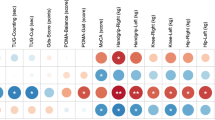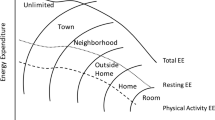Abstract
This paper reports the description of a multi-sensor platform able to automatically assess the level of physical activity and sedentary time of older adults. The platform has a hierarchical network topology, compound by N detector nodes managing several ambient sensor nodes and one detector node that manages a wearable sensor node. The system provides also one coordinator node that receives high-level reports from detector nodes. The idea of using heterogeneous sensors is motivated by the fact that in this way we expands the number of end-users, as they may accept only a type of sensor technology. The objective assessment was conducted through two main algorithmic steps: (1) recognition of well-defined set of human activities, detected by a 3D vision sensor (ambient node) and a smart garment (wearable sensor node), and (2) estimation of a physiological measure, that is (MET)-minutes. Results obtained in terms of activity recognition (and subsequent physical activity/sedentary time assessment) showed that the integrated version of the platform performs better than each single sensor technology with an overall accuracy obtained using simultaneously data provided from both sensory technologies that is about 5% higher of single sub-system, thus confirming the advantage in using a coordinator node. Finally, an added value of this work is the capability of the platform in providing a sensing invariant interface (i.e., abstracted from any specific sensing technology), since the use of the activities enables the integration of a wide set of devices, providing that they are able to reproduce the same set of features.







Similar content being viewed by others
References
Augusto JC, Nakashima H, Aghajan H (2010) Ambient intelligence and smart environments: a state of the art. In: Handbook of ambient intelligence and smart environments. Springer, US, pp 3–31
Baloch S, Krim H, Kogan I, Zenkov D (2005) Rotation invariant topology coding of 2D and 3D objects using Morse theory. Proc ICIP 3:796–799
Barer D, Nouri F (1989) Measurement of activities of daily living. Clin Rehabil 3(3):179–187
Barnes J, Behrens TK, Benden ME, Biddle S, Bond D, Brassard P, Colley R (2012) Letter to the editor: standardized use of the terms “sedentary” and “sedentary behaviours”. Appl Physiol Nutr Metab 37(3):540–542
Bassett DR Jr (2000) Validity and reliability issues in objective monitoring of physical activity. Res Q Exerc Sport 71(sup2):30–36
Bassett DR Jr (2003) International physical activity questionnaire: 12-country reliability and validity. Med Sci Sports Exerc 35(8):1396
Bassett DR Jr, Wyatt HR, Thompson H, Peters JC, Hill JO (2010) Pedometer-measured physical activity and health behaviors in US adults. Med Sci Sports Exerc 42(10):1819
Buccolieri F, Distante C, Leone A (2005) Human posture recognition using active contours and radial basis function neural network. Proc AVSS:213–218
Burges CJC (1998) A tutorial on support vector machines for pattern recognition. Data Min Knowl Disc 2(2):121–167
Chastin SF, Buck C, Freiberger E, Murphy M, Brug J, Cardon G, Oppert JM (2015) Systematic literature review of determinants of sedentary behaviour in older adults: a DEDIPAC study. Int J Behav Nutr Phys Act 12(1):127
Claridge EA, McPhee PG, Timmons BW, Martin GK, MacDonald MJ, Gorter JW (2015) Quantification of physical activity and sedentary time in adults with cerebral palsy. Med Sci Sports Exerc 47(8):1719–1726
Dahlgren G, Carlsson D, Moorhead A, Häger-Ross C, McDonough SM (2010) Test–retest reliability of step counts with the ActivPAL™ device in common daily activities. Gait Posture 32(3):386–390
Debnath R, Takahide N, Takahashi H (2004) A decision based one-against-one method for multi-class support vector machine. Pattern Anal Applic 7(2):164–175
Diraco G, Leone A, Siciliano P (2011) Geodesic-based human posture analysis by using a single 3D TOF camera. Proc ISIE:1329–1334
Dogra S, Stathokostas L (2012) Sedentary behavior and physical activity are independent predictors of successful aging in middle-aged and older adults. J Aging Res
Dwyer TJ, Alison JA, McKeough ZJ, Elkins MR, Bye PTP (2009) Evaluation of the SenseWear activity monitor during exercise in cystic fibrosis and in health. Respir Med 103(10):1511–1517
Gillick MR, Serrell NA, Gillick LS (1982) Adverse consequences of hospitalization in the elderly. Soc Sci Med 16(10):1033–1038
Hallal PC, Andersen LB, Bull FC, Guthold R, Haskell W, Ekelund U, Lancet Physical Activity Series Working Group (2012) Global physical activity levels: surveillance progress, pitfalls, and prospects. Lancet 380(9838), 247–257
Harrington DM, Welk GJ, Donnelly AE (2011) Validation of MET estimates and step measurement using the ActivPAL physical activity logger. J Sports Sci 29(6):627–633
Hart TL, Ainsworth BE, Tudor-Locke C (2011) Objective and subjective measures of sedentary behavior and physical activity. Med Sci Sports Exerc 43(3):449–456
He Y, Li Y (2013) Physical activity recognition utilizing the built-in kinematic sensors of a smartphone. Int J Distrib Sens Netw 9(4):481580
He W, Goodkind D, Kowal P (2016) An aging world: 2015. US Census Bureau, pp 1–165
Katzmarzyk PT (2010) Physical activity, sedentary behavior, and health: paradigm paralysis or paradigm shift? Diabetes 59(11):2717–2725
Kellokumpu V, Pietikäinen M, Heikkilä J (2005) Human activity recognition using sequences of postures. MVA (pp 570–573)
Lee M, Kim J, Jee SH, Yoo SK (2010). Review of daily physical activity monitoring system based on single triaxial accelerometer and portable data measurement unit. In: Machine learning and systems engineering. Springer, The Netherlands, pp 569–580
MacQueen JB (1967) Some methods for classification and analysis of multivariate observations. In: Proceedings of 5-th Berkeley symposium on mathematical statistics and probability, Berkeley, University of California Press, 1:281–297
Martin Ginis KA, Latimer AE (2008) Physical activity recall assessment for people with spinal cord injury (PARA-SCI): Administration and Scoring Manual. McMaster University, Hamilton
Paffenbarger R, Wing A, Hyde R (1978) Paffenbarger physical activity questionnaire. Am J Epidemiol 108:161–175
Pitta F, Troosters T, Probst VS, Spruit MA, Decramer M, Gosselink R (2006) Quantifying physical activity in daily life with questionnaires and motion sensors in COPD. Eur Respir J 27(5):1040–1055
Rabiner LR (1989) A tutorial on hidden Markov models and selected applications in speech recognition. Proc IEEE 77(2):257–286
Reeb G (1946) Sur les points singuliers d’une forme de Pfaff completement integrable on d’une fonction numerique. Comptes Rendus Acad Sci 222:847–849
Rescio G, Leone A, Siciliano P (2013) Supervised expert system for wearable MEMS accelerometer-based fall detector. J Sens
Thorp AA, Owen N, Neuhaus M, Dunstan DW (2011) Sedentary behaviors and subsequent health outcomes in adults: a systematic review of longitudinal studies, 1996–2011. Am J Prev Med 41(2):207–215
Unick JL, Lang W, Tate DF, Bond DS, Espeland MA, Wing RR (2017) Objective estimates of physical activity and sedentary time among young adults. J Obes
Verroust A, Lazarus F (2000) Extracting skeletal curves from 3D scattered data. Vis Comput 16(1):15–25
Virone G, Alwan M, Dalal S, Kell SW, Turner B, Stankovic JA, Felder R (2008) Behavioral patterns of older adults in assisted living. IEEE Trans Inf Technol Biomed 12(3):387–398
World Medical Association (2001) World Medical Association Declaration of Helsinki. Ethical principles for medical research involving human subjects. Bull World Health Organ 79(4):373
Xiao Y, Siebert P, Werghi N (2004) Topological segmentation of discrete human body shapes in various postures based on geodesic distance. Proc ICPR 3:131–135
Author information
Authors and Affiliations
Corresponding author
Rights and permissions
About this article
Cite this article
Caroppo, A., Leone, A. & Siciliano, P. Objective assessment of physical activity and sedentary time of older adults using ambient and wearable sensor technologies. J Ambient Intell Human Comput 15, 1961–1973 (2024). https://doi.org/10.1007/s12652-017-0610-5
Received:
Accepted:
Published:
Issue Date:
DOI: https://doi.org/10.1007/s12652-017-0610-5




